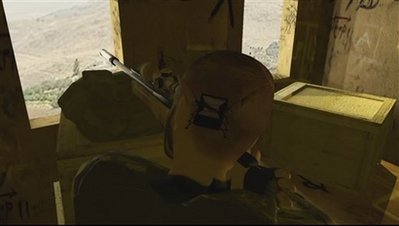
This photo, taken from video of computer animation and released by the U.S. Air Force, shows the next generation of drones, called Micro Aerial Vehicles, or MAVs. The MAVs could be as tiny as bumblebees and capable of flying undetected into buildings, where they could photograph, record, and even attack insurgents and terrorists. U.S. military engineers are trying to design flying robots disguised as insects that could one day spy on enemies and conduct dangerous missions without risking lives. [Agencies]
|
"If we could get inside the buildings and inside the rooms where their activities are unfolding, we would be able to get the kind of intelligence we need to shut them down," said Loren Thompson, a defense analyst with the Lexington Institute in Arlington, Va.
Philip Coyle, senior adviser with the Center for Defense Information in Washington D.C., said a major hurdle would be enabling the vehicles to carry the weight of cameras and microphones.
"If you make the robot so small that it's like a bumblebee and then you ask the bumblebee to carry a video camera and everything else, it may not be able to get off the ground," Coyle said.
Parker envisions the bird-sized vehicles as being able to spy on adversaries by flying into cities and perching on building ledges or power lines. The vehicles would have flappable wings as a disguise but use a separate propulsion system to fly.
"We think the flapping is more so people don't notice it," he said. "They think it's a bird."
Unlike the bird-sized vehicles, the insect-sized ones would actually use flappable wings to fly, Parker said.
He said engineers want to build a vehicle with a 1-inch wingspan, possibly made of an elastic material. The vehicle would have sensors to help avoid slamming into buildings or other objects.
Existing airborne robots are flown by a ground-based pilot, but the smaller versions would fly independently, relying on preprogrammed instructions.
Parker said the tiny vehicles should also be able to withstand bumps.
"If you look at insects, they can bounce off of walls and keep flying," he said. "You can't do that with a big airplane, but I don't see any reason we can't do that with a small one."
An Air Force video describing the vehicles said they could possibly carry chemicals or explosives for use in attacks.
Once prototypes are developed, they will be flight-tested in a new building at Wright-Patterson dubbed the "micro aviary" for Micro Air Vehicle Integration Application Research Institute.
"This type of technology is really the wave of the future," Thompson said. "More and more military research is going into things that are small, that are precise and that are extremely focused on particular types of missions or activities."

